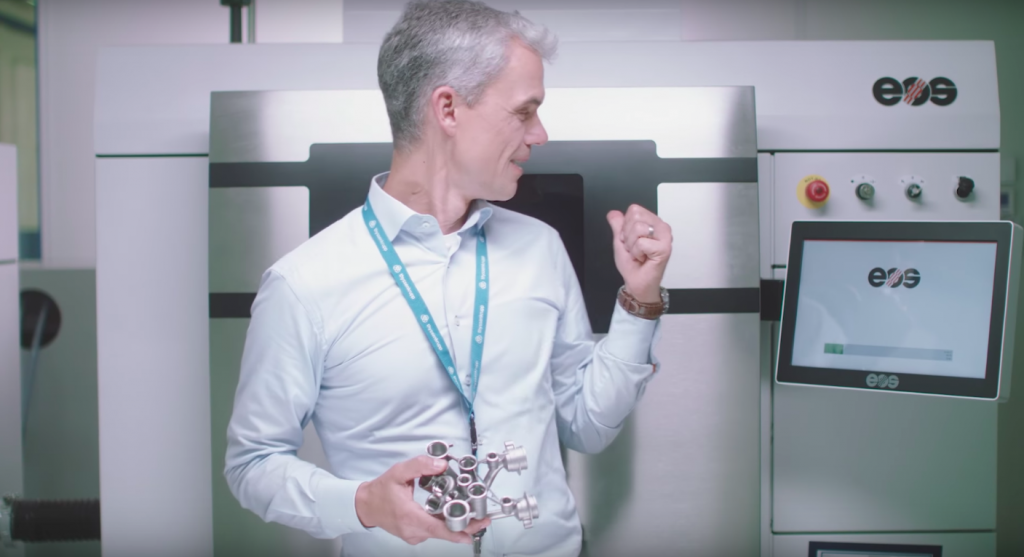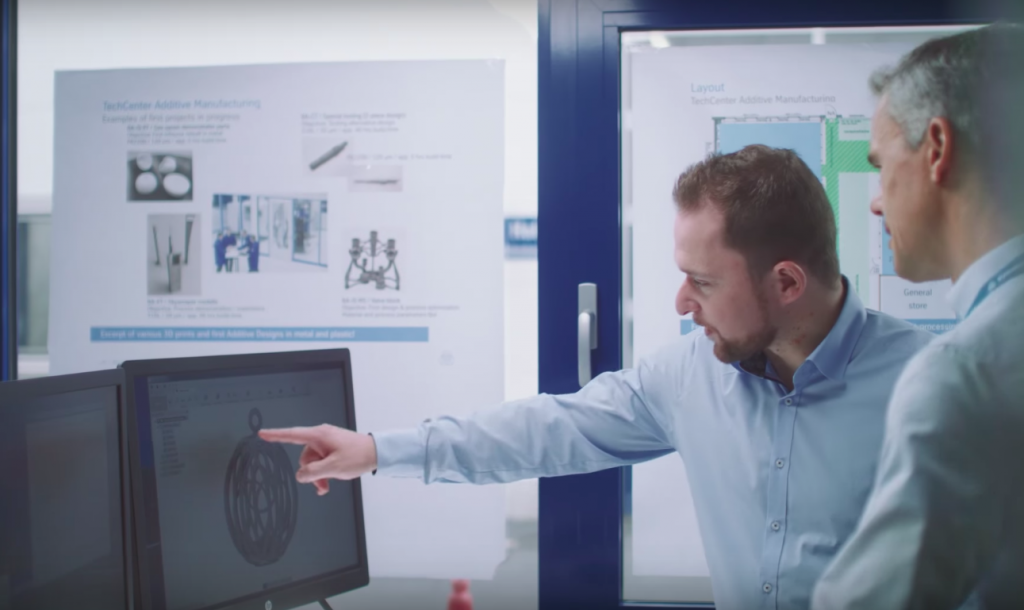German steel and engineering conglomerate Thyssenkrupp, already known for pioneering graphene technologies, has announced that its purpose built 3D printing centre has opened and commenced production. Known as the “TechCenter Additive Manufacturing”, the facility, located in Mulheim am Ruhr, boasts an EOS M290 metal 3D printing machine and a plastic selective laser sintering machine to supply custom parts.
A smoother supply chain and more specialist products
The suggestion for a 3D printing facility was first mooted in April this year by board member Hans-Joseph Hoss at the Hannover Messe. Hoss emphasised the company’s desire to maintain control over the entirety of its supply chain, stating: “We start from the engineering side and deliver the final product with all after-sales and related services”.

Announcing the facility’s opening, Thyssenkrupp noted that designing directly from CAD ensures that tool and die making is no longer needed. This is beneficial not only for efficiency and cost, but also for customer services and the environment.
Dr. Reinhold Achatz, the company’s chief technology officer, added that the move to 3D printing would enable the creation of “more complex structures that are stronger yet lighter than parts produced by traditional methods”, such as a 3D printed complex gas sample collecting probe that is heat-resistant enough to be used in a cement furnace.
An industrial and commercial legacy
The additive manufacturing team at the Thyssenkrupp facility joins an existing project group. This group is tasked with identifying innovative applications for the technology, and patenting the company’s 3D printed products. The facility is set to join the company’s material’s services division after three years of successful operation.

This is another step in the company’s gradual move towards an increasingly digital production line, already making extensive use of 3D scanning and digital simulation technology. The company is gearing up for the eventual commercial availability of 3D printing, and for the increasing use of this technology in the engineering, aerospace, naval shipbuilding and automotive sectors.
For more on industrial 3D printed production, sign up to our free newsletter, follow us on Twitter, and like us on Facebook.
Featured image: A metal 3D printed engine part printed by Thyssenkrupp. Photo via Youtube/Thyussenkrupp.


